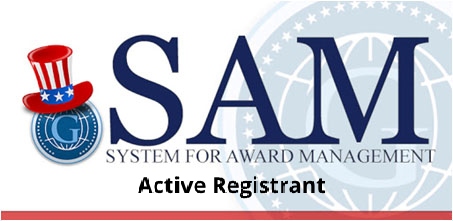From the passage of the Inflation Reduction Act to evolving Federal Energy Regulatory Commission rulemakings and a wave of ambitious state decarbonization mandates, the U.S. electric power sector has entered a period of significant regulatory transformation. Infrastructure investments that once followed predictable, decades-long cycles now face shifting federal incentives, new resilience requirements, and diverse state targets that often outstrip available technologies. In this environment, static planning methods risk leaving utilities vulnerable to unexpected costs, stranded assets, or compliance penalties.
Industry leaders have recognized that navigating this complex web of policies requires a fundamentally different approach: adaptive leadership. This style emphasizes iterative decision-making, cross-functional teamwork, forward-looking scenarios, and a culture of continuous learning. By integrating these practices into their organizations’ DNA, utilities can withstand regulatory uncertainty and use it as a catalyst for innovation, resilience, and strategic advantage.
The Evolving Regulatory Landscape
The regulatory landscape from 2021 to 2025 features four main currents. First, the Inflation Reduction Act, signed in August 2022, allocated over $370 billion for clean energy tax incentives, direct payments for non-taxable entities, and grants for grid-enhancement technologies. Although hailed as a game-changer, the IRA’s implementation depends on detailed Treasury guidance regarding prevailing wages, apprenticeship requirements, and definitions of qualifying property.
The current administration has also proposed scaling back certain renewable energy tax credits by reducing bonus incentives for domestic content and adjusting credit eligibility timelines. This action has created additional uncertainty in project planning and led utilities to safeguard their capital commitments against potential gradual phase-outs of these incentives. Delays or mid-course adjustments to these interpretive rules have compelled utilities to begin project planning with multiple cost assumptions, complicating capital and resource allocation.
Second, the FERC has driven significant rule changes. In late 2023, FERC issued comprehensive interconnection reforms to accelerate the queue of renewable projects waiting for grid access. Though the principles were quickly approved, cost-allocation mechanisms and standardized study processes are still in development, effectively placing the burden on utilities to model scenarios where funding responsibilities may shift among developers, transmission owners, and end-users. Concurrently, FERC’s new cold-weather and resilience standards, motivated by earlier system failures, introduced timely reliability measures but lacked final technical frameworks, leaving companies to prepare for various compliance timeframes and capital expenditures.
Third, state-level climate objectives have expanded rapidly. More than twenty states and the District of Columbia now require 100 percent clean or carbon-free electricity by mid-century, with interim milestones often aiming for 50 percent or higher by 2030. These mandates necessitate swift integration of renewables, storage, and demand-management tools—even as long-duration storage, green hydrogen, and advanced nuclear technologies are still in the early stages of commercial deployment. To complicate matters further, neighboring states often adopt varying timelines and create exemptions for specific resource types, resulting in a patchwork of regulatory requirements for utilities operating in regional markets.
Finally, the Department of Energy has driven modernization through initiatives like the Grid Resilience and Innovation Partnership (GRIP), awarding approximately $100 million in grants to enhance transmission, expand microgrid demonstrations, and advance emerging technologies. As award announcements were made throughout 2024, utilities needed to adapt proposals to changing funding criteria—balancing immediate infrastructure needs with broader resilience goals and ensuring project designs could meet evolving performance standards.
Together, these factors redefine the planning horizon for every utility. Traditional methods—tying capital budgets to a single long-term forecast—are insufficient when incentive structures, technical requirements, and compliance deadlines fluctuate. In this context, adaptive leadership acts as a crucial compass.
Iterative Decision Processes
The shift from linear, monolithic planning to iterative, feedback-driven decision-making processes is at the heart of adaptive leadership. Utilities have begun to emulate agile methodologies from the software sector, adopting short “sprint” cycles to deliver minimum viable projects or compliance filings that can be refined as regulatory details emerge.
A Midwestern utility illustrates this transformation. Facing unclear IRA guidance on energy storage incentives, the utility conducted a six-month battery pilot at a solar site; the project informed their subsequent deployment strategies. The sprint team—engineers, treasury specialists, procurement officers, and field technicians—set a clear objective: deliver a functioning system under competing definitions of qualified property. Weekly check-ins allowed the team to document regulatory clarifications, adjust component sourcing to meet evolving labor rules and refine IRS filing templates. By the end of the sprint, the utility not only achieved an operational pilot but developed a repeatable playbook that informed subsequent larger-scale deployments under more favorable IRA terms. This agile approach prevented extended design cycles from conflicting with shifting incentive parameters, ensuring that capital commitments remained aligned with the prevailing policy environment.
Across the industry, various sprint teams tackle complex challenges—from drafting initial FERC interconnection study proposals to piloting demand-response programs that anticipate future state-mandated load flexibility targets. Rather than waiting for static rule finalization, utilities simultaneously develop working prototypes and regulatory comments, effectively influencing policy direction while maintaining project momentum.
Cross-Functional Collaboration and Unified Metrics
Acknowledging that regulatory initiatives encompass legal, technical, financial, and operational areas, utilities have dismantled traditional silos. Adaptive leadership fosters ongoing cross-functional task forces that meet regularly to interpret pending regulations, conduct impact assessments, and agree on coordinated responses, ensuring that strategic adjustments flow consistently throughout the organization.
One coastal utility established a cross-departmental group to assess potential EPA carbon standards impacts, focusing on projected emissions and cost metrics. Legal analysts provided draft rule language as proposed, finance teams estimated the impact on cost-of-service models, engineering groups assessed which generation assets could effectively meet stricter emission limits, and customer-relations staff developed communication plans for ratepayers. Instead of sequential handoffs with long wait times, the task force held weekly sessions where representatives could discuss issues in real-time and agree on cohesive action plans—whether accelerating selective unit retirements or launching studies on carbon capture retrofits. By uniting various departments around shared performance metrics—such as projected emissions trajectories and incremental cost-per-megawatt metrics—the task force represented a unified organizational response capable of flexibly adjusting its roadmap as EPA rulemaking advanced through public comment and revision.
Additionally, utilities with multi-jurisdictional footprints now coordinate their responses to state-specific mandates by forming regional coalitions that bring together peer companies. When neighboring states introduced differing interim targets, a group of southeastern utilities formed an informal modeling consortium to harmonize state PUC filings. The consortium developed a shared analytical platform, enabling each company to evaluate its resource plans against a unified dataset that reflects both states’ policy timelines. This collaborative approach reduced redundant analytical efforts and allows utilities to communicate with a consistent voice to both state PUCs, advocating for harmonized implementation frameworks that lower compliance costs.
Strategic Foresight through Scenario-Based Planning
Utilities have acknowledged the limitations of planning for a single “most likely” policy scenario. Instead, they invest in comprehensive scenario-based strategic planning exercises, exploring potential futures—rapid decarbonization, technology delays, high load growth, supply-chain disruptions, or backsliding regulatory ambition.
A large southwestern utility’s executive team led a multi-day visioning workshop that generated four distinct futures: a high-renewables scenario under strict carbon pricing, a delayed-technology adoption scenario with extended reliance on thermal generation, an electrification surge scenario driven by accelerated EV uptake, and a supply-constrained scenario hindered by transmission permit backlogs. The team stress-tested its capital portfolio for each future, evaluating which generation, storage, and transmission investments would remain prudent. They then identified regulatory “trigger points”—for example, the publication of new IRS guidance or the enactment of a state energy storage mandate—that would activate pre-approved contingency playbooks, ranging from ordering long-lead-time turbines to coordinating renewable procurement bids. This practice ensured that decision-makers could mobilize known courses of action when policy milestones were reached, rather than engaging in crisis-mode debates.
Some utilities have enhanced government-affairs functions to provide concise regulatory briefings in monthly strategic reviews. These teams, which report directly to the CEO’s office, continuously monitor congressional dockets, FERC filings, state legislative trackers, and technology roadmaps. Their concise briefings and risk assessments inform monthly strategic reviews, allowing leadership to adjust budgets or project priorities before meeting formal policymaking milestones. Utilities can navigate shifting regulatory challenges with increased confidence by embedding foresight at the highest levels.
Cultivating a Change-Ready Culture
Processes and structures alone cannot support adaptive leadership without a nurturing culture. Utility executives invest in comprehensive training programs, open communications, and organized learning rituals to empower employees to accept regulatory change.
One utility group launched an internal training program on agile workflows and regulatory fundamentals. Participation is open to staff at all levels—from project engineers to mid-level managers—and includes hands-on simulations where participants draft compliance plans under simulated rule changes. These exercises foster familiarity with ambiguity and build cross-departmental relationships that prove invaluable when real regulations emerge.
Leaders also commit to transparent communication. Some utilities hold quarterly adaptation forums with executive leadership presenting policy updates. Leaders anchor change in organizational purpose by directly linking regulatory developments to the company’s mission—be it decarbonization, resilience, or customer affordability.
Teams conduct formal after-action reviews after each significant regulatory milestone or project sprint. These structured post-mortems identify successes, pain points, and areas for improvement—and then integrate findings into living playbooks. Over time, this iterative learning loop weaves institutional knowledge into everyday operations, making adaptability a routine competency rather than a sporadic response.
Leveraging Partnerships and Industry Networks
Even the most adaptable utilities understand that collaborating externally enhances internal efforts. Thus, adaptive leadership goes beyond the enterprise to include partnerships with vendors, research institutions, regulators, and industry associations.
In pursuit of grid modernization grants, utilities form consortia that blend utility expertise, university research, and technology provider innovation. These consortia submit strong grant applications aligned with DOE’s evolving performance metrics, sharing resources and combining complementary strengths. Successful projects become living laboratories for new technologies, and their outcomes inform subsequent regulatory comments and funding pursuits.
Industry associations like the American Public Power Association and the National Rural Electric Cooperative Association serve critical roles as conveners and advocates. They organize in-depth regulatory workshops, publish compliance toolkits, and coordinate collective lobbying efforts to influence practical policy frameworks. For instance, NRECA’s advocacy around the IRA’s direct-pay provision for non-taxable entities ensured that cooperatives could access tax-equivalent incentives—unlocking a wave of renewable deployments in rural areas.
Regional peer coalitions enhance knowledge exchange. Utilities in hurricane-prone areas, for instance, share resilience drill protocols, storm-hardening designs, and communication strategies with emergency management agencies. This peer learning speeds up adaptation and ensures communities benefit from lessons learned elsewhere.
Conclusion
The era stretching from 2021 to 2025 has taught the electric power industry that regulatory uncertainty is neither transitory nor exceptional. Instead, it defines the modern utility’s Operating context: policy incentives, rulemaking, mandates, and grant programs evolve together, often with partial information and shifting parameters. Rigid, top-down planning and isolated departmental responses are no longer sufficient. The utilities best equipped for this reality have embraced adaptive leadership—blending iterative decision frameworks, cross-functional collaboration, strategic foresight, cultural investment, and external partnerships into a cohesive transformation program.
Utilities that have adopted these practices showcase the power of adaptability: they complete pilot sprints under uncertain incentives, coordinate unified regulatory task forces, trigger pre-planned responses to policy milestones, embed learning loops in every project, and leverage networks to enhance their capabilities. Through adaptive leadership, they navigate through uncertainty, ensuring reliable service, expedited decarbonization, improved resilience, and lasting value for customers and communities.
As energy policy evolves beyond 2025—shaped by new technologies, global market shifts, and successive administrations—the utilities that have embraced adaptability will be well-prepared. Their organizations, culture, and strategies will remain flexible and refined, positioning them to survive and lead the clean energy transition into its next regulatory chapter.



